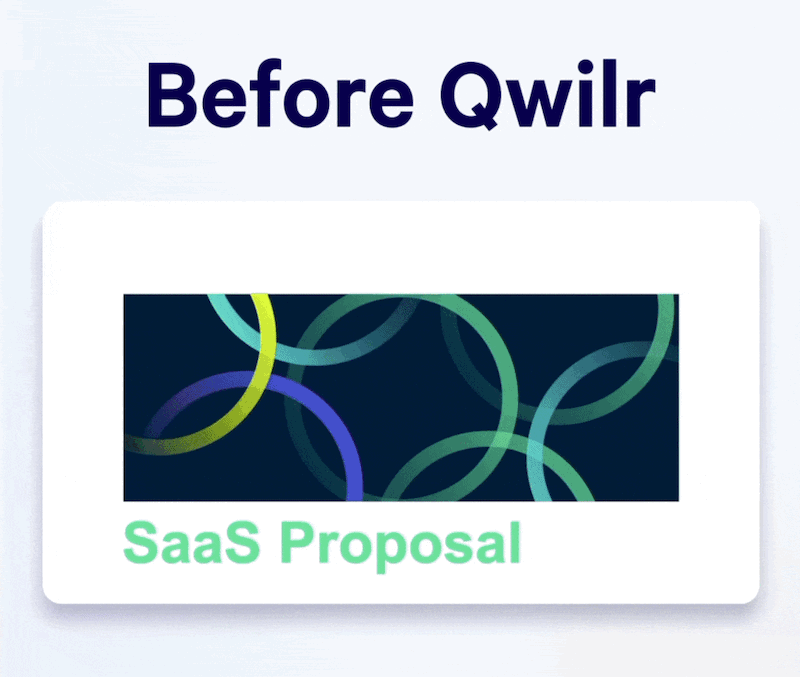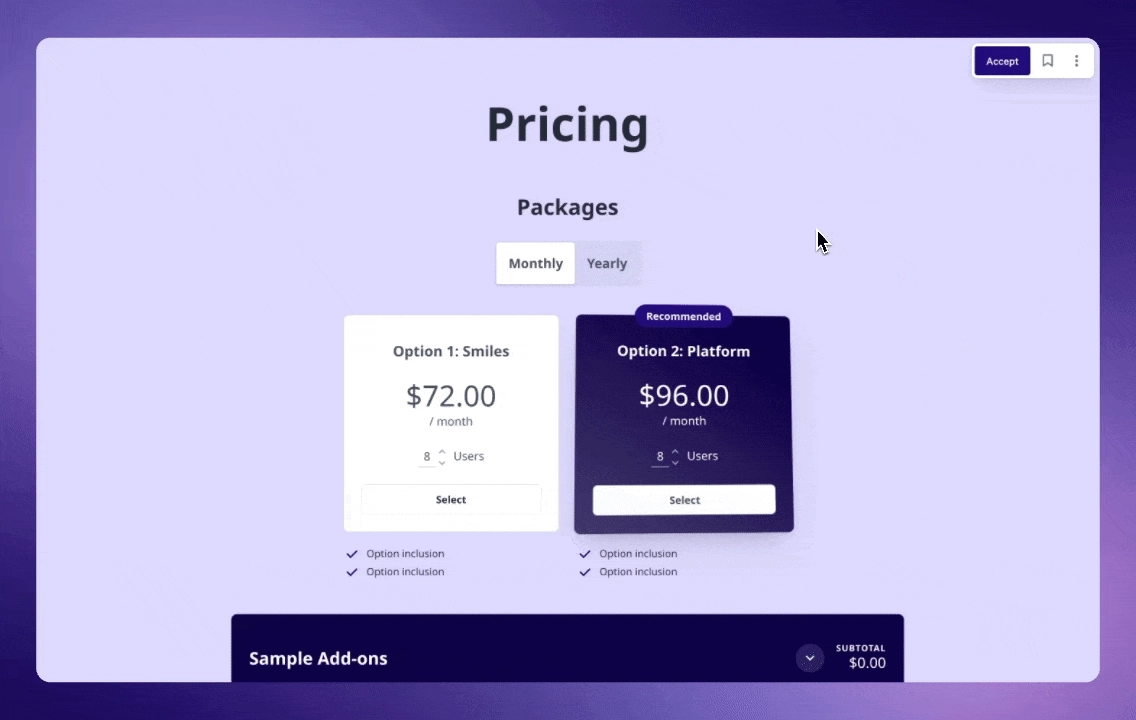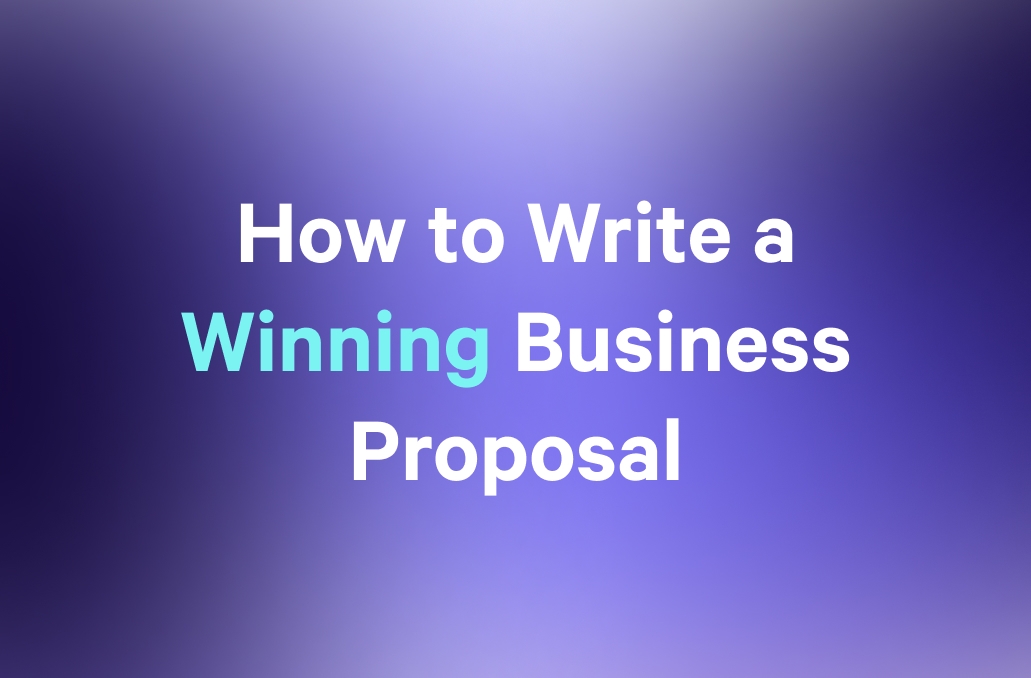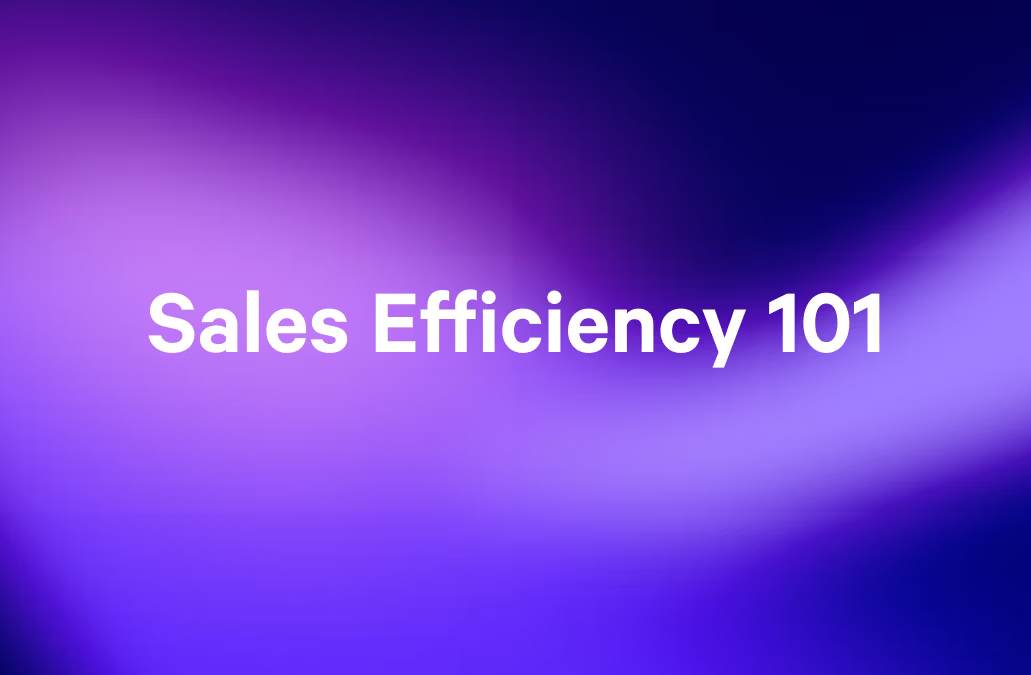Sales documentation. Just the phrase alone sounds about as thrilling as watching paint dry. But hear us out: great sales documents are a secret weapon, turning hesitant prospects into paying customers faster than you can say "sign here." If you've ever found yourself scrambling to pull together pricing, proposals, or case studies five minutes before a client meeting, this guide is for you.
Creating rock-solid sales documentation isn't just about making your life easier (though that's a major perk). It’s about ensuring that your sales process runs smoother than ever. So, let’s crack this open!
Key takeaways
- Sales documentation streamlines the sales process, ensures consistency, and reduces miscommunication, saving time and preventing errors.
- Internal documents (playbooks, objection guides) help the team, while customer-facing documents (proposals, brochures) engage prospects.
- Sales docs improve efficiency, training, customer experience, scalability, and consistency, helping reps close deals faster.
Tools like Qwilr help create and manage sales docs efficiently with features like dynamic pricing, real-time alerts, and easy integrations.
What is sales documentation?
In simple terms, sales documentation is any written (or digital) material that supports your sales team in closing deals. Think of it as your sales team’s playbook, loaded with the information, tools, and resources they need to effectively sell your product or service.
Sales documentation categories
To understand sales documentation better, let’s break it down into two main categories:
- Internal sales documentation – This is for your sales team’s eyes only. It includes sales enablement content, sales playbooks, objection-handling guides, competitive analysis, and internal FAQs. These materials help your team stay informed and aligned.
- Customer-facing sales documentation – These materials are shared with prospects and clients. They include product brochures, proposals, case studies, pricing sheets, and contracts.
Without proper sales documentation, sales teams end up improvising, which can lead to inconsistent messaging, lost deals, and a lot of unnecessary stress. You could say it's like performing stand-up comedy with nothing but awkward silence, confused stares, and someone eventually faking a laugh out of pity.
Psst: Find out how to write a sales one-pager here
Benefits of sales documentation
There's method behind the tedious madness when it comes to drawing up sales documents. Why invest precious time in creating sales documentation, you might ask? Here’s why:
1. Consistency across the board
Without documentation, each sales rep may present your product differently. Having well-prepared materials ensures that everyone is aligned with your brand’s message, making it easier for prospects to understand your offering. This reduces the risk of miscommunication and keeps branding uniform.
Imagine one salesperson emphasizing affordability while another highlights premium features. A standardized sales document ensures that all sales reps communicate the same key benefits, making your messaging stronger and more effective.
2. Increased efficiency
It’s quite simple: no more reinventing the wheel. With solid documentation, sales reps spend less time answering the same questions over and over and more time actually closing deals. By providing quick reference materials, you cut down unnecessary back-and-forth emails and calls.
Imagine a well-structured FAQ document saves a rep from answering, "How does your pricing model work?" a hundred times a week.
3. Improved training and onboarding
New sales hires can get up to speed much faster when they have structured documentation at their fingertips. Instead of shadowing experienced reps for weeks, they can start selling confidently with the right materials. It reduces training time and makes knowledge transfer seamless. It’s basically a no-brainer.
Imagine a new rep who can reference a Sales Playbook that outlines product features, customer objections, and best responses rather than relying solely on verbal training.
4. Better customer experience
Prospects love clarity. When they receive well-structured, professional documents, they perceive your company as credible and trustworthy. A sloppy proposal can kill a deal before it even begins, while a polished presentation can leave a lasting impression.
Imagine a visually appealing product brochure with clear pricing and features to keep a prospect engaged. No, think of an unclear, cluttered document. A treasure map drawn by a toddler?
5. Scalability
If your company is growing, you’ll need more salespeople. Instead of relying on word-of-mouth training, scalable sales documentation ensures that new reps follow the same successful sales strategies as the veterans. This makes expansion smooth and structured for both the newbies and the OG’s.
Imagine a startup growing from 5 to 50 sales reps, and they all ensure consistency in messaging and strategy with detailed sales documentation.
Steps to prepare sales documents
Organize. Simplify. Clarify. This is the entire point of using these tools.
Step 1: Identify your sales process
Before creating documents, you need to map out your sales journey. Ask yourself:
- How do leads enter the sales funnel? Understanding lead generation sources helps you create relevant documents for different stages.
- What are the most common objections, and how do you address them? Sales teams frequently encounter resistance; documenting responses ensures they can handle concerns effectively.
- What key touch points do prospects go through before making a decision? This helps you determine which documents are needed at each phase.
- What information does your sales team need at each stage? Equipping your team with the right resources at the right time improves efficiency.

Step 2: Determine your audience
Who are you writing for? Are you speaking to internal sales reps who need clear guidelines and quick access to information? Or are you addressing potential customers, where the focus shifts to benefits, value, and trust-building? Perhaps you’re writing for leadership, needing strategic overviews and performance data. Identify who’s who in the zoo and ensure your message hits the mark every time.
- Sales reps need internal guides, objection-handling scripts, and competitive analysis to enhance their pitches.
- Prospects need brochures, product overviews, and case studies to better understand the product.
- Decision-makers need pricing sheets, proposals, and ROI breakdowns to justify the purchase.
Types of sales documentation
We’re getting closer and closer to the gems and jewels of the sales world. These documents are the backbone of your sales process, providing your team with the tools they need to engage prospects and close deals.
Internal Sales Documents
Sales playbook
You’ve definitely heard of this before. A playbook is a strategic guide covering sales messaging, best practices, and objection-handling techniques. It provides:
- An overview of the company’s sales methodology and processes.
- Key selling points and differentiators.
- Ideal customer profiles and personas.
- Strategies for overcoming objections and closing deals.
- Frequently asked questions and recommended responses.
- Role-specific guidance for SDRs, AEs, and account managers.
Check out Qwilr’s Pricing Playbook as an example
Competitive battle cards
Competitive battle cards are quick-reference sheets that give your sales team a clear snapshot of how your product stacks up against competitors. Act as a tactical playbook - prepared, strategic, and ready to deploy in the heat of the moment.
- Highlight unique selling points and key differentiators.
- Provide direct responses to competitor claims.
- Offer side-by-side feature comparisons.
- Arm sales reps with persuasive counterarguments.
Objection handling guide
Objection, Your Honour! This guide involves pre-prepared responses to common sales objections, helping sales reps close deals more confidently. It’s the counterargument you write up with every possible glitch or query the customer might have. It includes:
- A list of frequent objections from prospects.
- Suggested responses and discussion points.
- Supporting evidence like case studies and data.
- Techniques for reframing objections into opportunities.
Internal pricing guide
Confidential breakdown of pricing tiers, discounts, and negotiation tactics. Here, you want your sales reps to navigate complex pricing scenarios with ease, to adjust the pricing on the fly! This guide helps sales reps:
- Understand standard pricing models.
- Know when and how to offer discounts.
- Handle objections related to price effectively.
- Navigate negotiation scenarios with confidence.
Cold call and email templates
Engage with prospects. Establish rapport. Nurture working conversations. Cold call and email templates are pre-written scripts designed to initiate dialogue with a customer. These templates give sales reps a strong starting point. They include personalized greetings, compelling subject lines, and persuasive messaging that can be easily customized to suit the prospect's specific pain points. These templates:
- Follow a structured approach for different stages of engagement.
- Include personalization tips to improve response rates.
- Provide variations for different industries and personas.
Customer-facing sales documents:
Product brochures
Did someone say advertise? They might as well have. Product brochures are visually striking overviews that showcase key features and benefits. With bold images, clear descriptions, and persuasive language, they grab attention and highlight your product’s value. They’re an easy-to-digest snapshot designed to make a lasting impression. They have:
- High-quality images and branding.
- Concise descriptions of features and their benefits.
- A clear call to action to encourage inquiries or purchases.
Case studies
Rather than explain what a case study is and how impactful these documents can be, here’s an example.
✅ Destined reduces sales document production time by 50% with Qwilr
Salesforce consulting firm Destined turned to Qwilr to streamline its sales proposal process, replacing hundreds of disorganized templates with a centralized, branded, and Salesforce-integrated solution. This shift saved them 50% in document creation time, improved proposal quality and consistency, and enabled faster, more personalized client engagement through interactive pricing and real-time analytics. Since adopting Qwilr, Destined has tripled its business, accelerated deal velocity, and gained greater control over forecasting and profitability.
Now you get it. Case studies include:
- A problem-solution-results structure.
- Data points showing measurable improvements.
- Direct quotes from satisfied customers.
- A call to action to encourage similar businesses to reach out.
Sales proposals
Sales proposals are where interest turns into intent. They’re the documents where you turn ideas into action, showing prospects exactly how your services will solve their problems and deliver real value.
Specifically, they:
- Address customer pain points and goals.
- Include detailed pricing breakdowns.
- Highlight the ROI of choosing your solution.
- Provide terms, conditions, and next steps.

With Qwilr, proposals are fast to create, easy to personalize, and always on-brand—turning a traditionally time-consuming task into a seamless, scalable process.
Contracts & agreements
Contracts and agreements are legal documents that protect both the seller and the buyer, preventing misunderstandings and providing a clear path forward. As The Godfather famously put it, "I’m gonna make him an offer he can't refuse,". The Godfather’s offer had a purpose:
- Clearly outline deliverables, responsibilities, and timelines.
- Define payment terms and conditions.
- Protect both parties with clear legal terms.
Qwilr makes managing contracts simpler with plain-text agreements, built-in e-signatures and approval workflows. Teams can set templates, lock legal sections, and ensure every deal goes out polished and protected.

Sales presentations
Sales presentations are visual narratives used to introduce your business, explain your offering, and persuade potential buyers. Whether shared live or asynchronously, they help sales teams make a compelling case by combining storytelling with relevant data, visuals, and insights. Pitch smarter, not harder. Sales presentations built in Qwilr go beyond static decks—they’re dynamic, interactive, and built to impress.
Effective sales presentations include:
- A structured story that aligns with buyer needs.
- Visuals, videos, and data to enhance engagement.
- Custom sections based on the audience or stage of the deal.
A clear call to action that moves the conversation forward.
White papers
White papers are in-depth reports that address industry challenges and position your product as the solution. They are designed to educate and inform, providing expert opinions. Effective white papers explore the problem, analyze its complexities, and present your product as the best solution. Here’s what they do:
- Provide detailed research and insights.
- Address common pain points in the industry.
- Position your company as a thought leader.
- Offer solutions backed by data and case studies.
Quotes
Quotes are pricing documents that break down the cost of your product or service. They're typically sent once a prospect is interested and ready to consider terms. A good quote is clear, accurate, and easy to approve—helping deals move from “maybe” to “yes” with fewer back-and-forths.
Qwilr quotes make it easier for buyers to choose what they want, sign on the spot, and stay aligned on expectations. And with the native payment processing software, QwilrPay, you can receive payment straight through your sales document.
Standard quote elements include:
- Itemized pricing with descriptions.
- Optional add-ons or packages.
- Terms and conditions for clarity.
- Acceptance steps, such as e-signatures or payment links.

ROI Calculators & pricing sheets
ROI calculators and pricing sheets are essential tools to help prospects clearly see the financial benefits of your product or service. These tools provide transparency and allow prospects to easily assess how the investment will pay off. Here’s how they work:
- Show cost vs. expected benefits calculations
- Include adjustable inputs for customization
- Provide visual representations of ROI
Customer onboarding guides
Mark is a new employee. He’s just joined the team and needs to quickly get up to speed with the product to assist customers effectively. To help him, Mark uses the customer onboarding guide, which:
- Provides clear, step-by-step instructions tailored to his role.
- Offers a structured setup process.
- Includes visuals like screenshots and walkthroughs.
- Provides troubleshooting tips and FAQs.
Top tips for effective sales documentation
To make sure your sales documents stand out and truly drive results, here are some key strategies.
Keep it concise
What did I just read? Let me start again. Um, this is what you don’t want. Sales teams and prospects don’t have time for fluff, so get to the point quickly. To ensure clarity, use bullet points for easy readability, clear and simple language, and short, impactful sentences. The goal is to communicate the key information without overwhelming the reader.
Use a consistent design
More consistent, less resistant. Ensure your branding is uniform by using consistent fonts, colors, and logos. Adopting a standardized template for sales documents and including high-quality visuals and graphics will help maintain a polished, cohesive look.
Regularly update documents
Misinformation can lead to lost trust, so it’s vital to keep all sales documentation current. Schedule periodic reviews and updates, gather feedback from sales reps and customers, and ensure that pricing and feature lists are always accurate. This helps maintain the reliability and relevance of your materials.
Make information easy to find
The days of the needle in haystacks are long gone. Ain’t nobody got time for that. Sales teams need quick access to the right documents at the right time. Use cloud storage or CRM software to organize documents into easily navigable folders. Add searchable tags and metadata, and provide a central repository where all sales resources are stored for easy retrieval.
Use customer testimonials
Real-world success stories add credibility to your sales materials. Effective testimonials are specific, highlighting measurable results. They should include customer names and company logos (with permission), and feature direct quotes to enhance authenticity and trustworthiness.
Add interactive elements
If you ain’t first, you’re last. If you’re not using these features, unfortunately, you're stuck in the past. Incorporating interactive elements like clickable PDFs, videos, and dynamic pricing tables can significantly enhance engagement. These elements make complex information easier to digest, allow prospects to interact with the content, and provide a more personalized experience that resonates with your audience.

Be customer-centric
Make the customer your world. (Swoon them, if you must!) Rather than simply listing product features, focus on addressing the prospect’s specific challenges and showing how your product solves their problems. Use real-world examples to illustrate the benefits, and make sure the materials align with their needs and concerns.
Qwilr’s Sales documents
Did we mention the method behind tedious madness somewhere? We want to take that back.
Qwilr revolutionizes the way sales teams create, manage, and close deals by offering an integrated platform that includes everything from proposals and quotes to sales playbooks and contracts. Professionalism and value at their finest:
- Interactive proposals with dynamic pricing
Create web-based proposals that allow for real-time adjustments to pricing, tailored to the client’s needs. This flexibility helps your team present relevant offers and close deals faster.
- Built-in e-signatures and payment collection
Eliminate the need for back-and-forth paperwork. Qwilr’s built-in e-signatures and payment collection tools allow you to finalize agreements instantly and securely.
This enables prospects to see the financial impact of your product or service in real-time. This tool helps customers visualize the value they’ll gain, making their purchasing decision easier and more confident.
Track how much time prospects spend on each section of your documents, giving your sales team valuable insights into areas of interest and opportunities to optimize the pitch.

- Real-time notifications
Receive instant alerts whenever a prospect interacts with your document, ensuring you can follow up at the right moment and keep the conversation moving forward.
- Seamless integration with HubSpot, Salesforce, Slack, and Stripe
Qwilr integrates with the tools your team already uses, centralizing all your data and streamlining workflows for maximum efficiency.
- 100+ professional templates
Choose from over 100 customizable templates for proposals, quotes, and sales materials, ensuring your documents are polished, professional, and aligned with your brand.
- Intuitive drag-and-drop editor and brand customization toolkit
Quickly build and personalize documents with Qwilr’s user-friendly editor, making it easy to create compelling, on-brand sales materials without any design experience.
- Automated content updates
Instantly update and edit content across multiple proposals and documents with a single click, ensuring your team always has the most current materials at their fingertips.
- Sales playbooks, battle cards, and internal pricing guides
Equip your sales team with the right resources, from strategic playbooks and competitive battle cards to pricing guides, ensuring they’re always prepared to close deals effectively.
- Case studies, proposals, quotes, contracts, and agreements
Create and deliver persuasive case studies, detailed proposals, transparent quotes, and legally binding contracts—all within the same platform, making the sales process seamless from start to finish.
About the author

Brendan Connaughton|Head of Growth Marketing
Brendan heads up growth marketing and demand generation at Qwilr, overseeing performance marketing, SEO, and lifecycle initiatives. Brendan has been instrumental in developing go-to-market functions for a number of high-growth startups and challenger brands.


